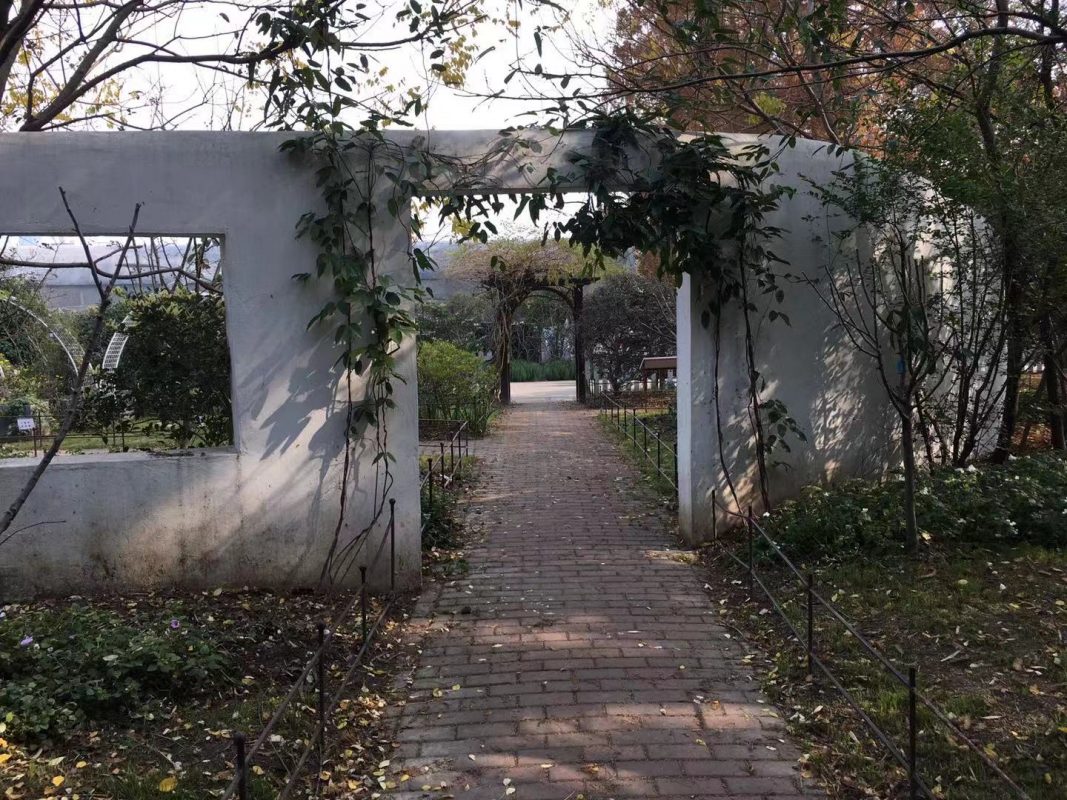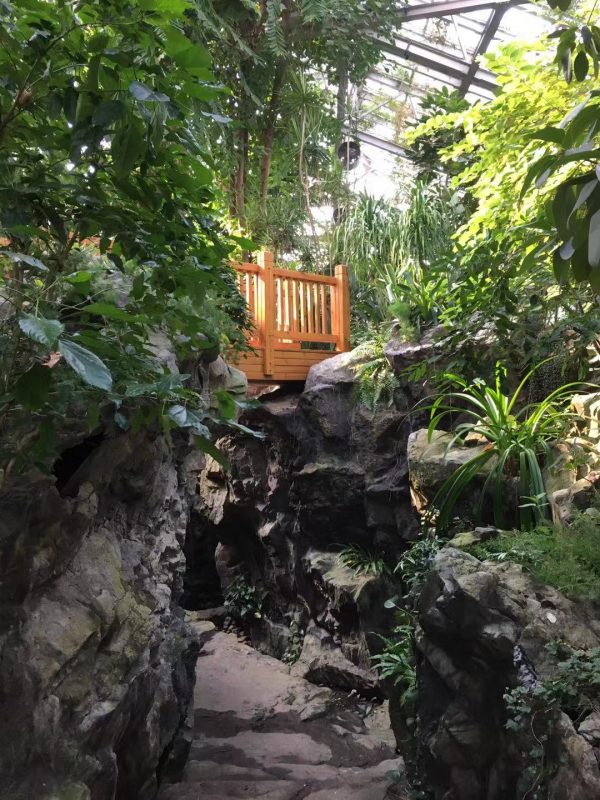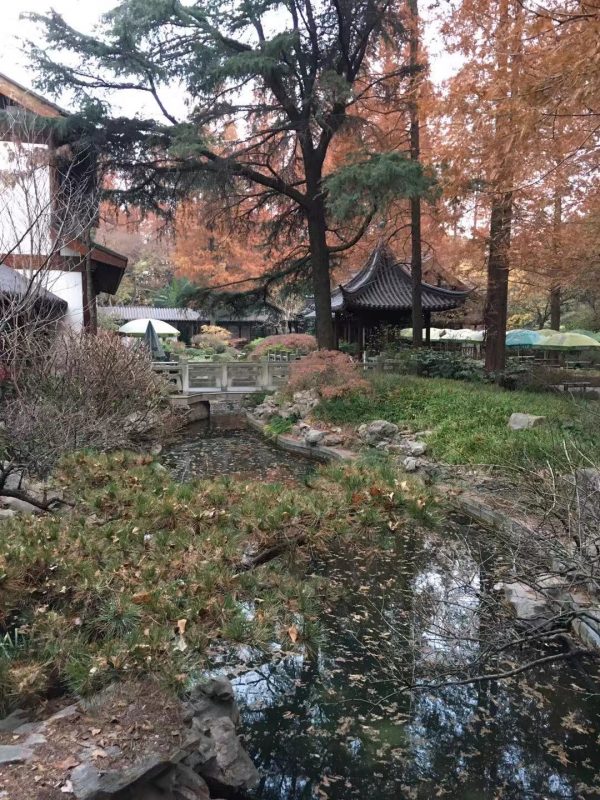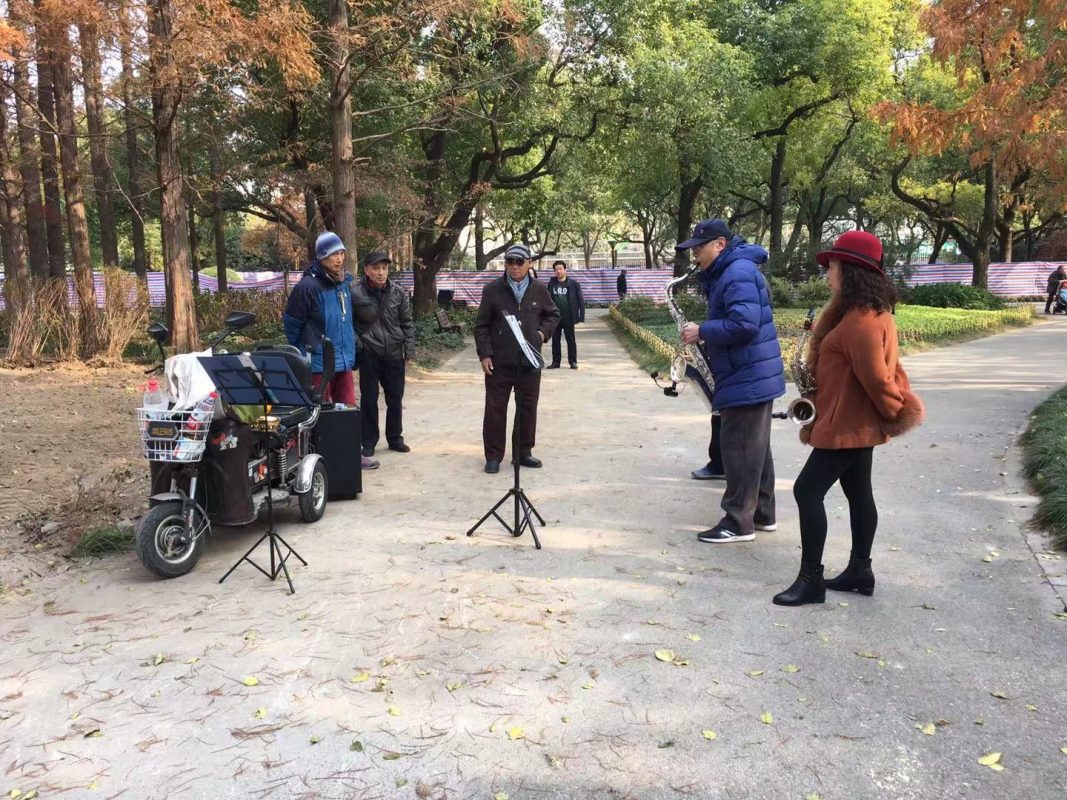The Gardens of Shanghai 🌳 Shanghai Botanical Garden (上海植物园)
Insiders Guide to the Shanghai Botanical Garden

The Shanghai Botanical Garden (上海植物园) is a bit of a hidden gem!
Unlike Yu Garden, the botanical garden isn’t as well known, but if you’re looking for more nature to explore and you like to take the road less traveled, then this garden is a great spot to visit!
Let’s give you a little tour of the Shanghai Botanical Garden and throw in some key facts and figures.
Shanghai Botanical Garden – How to get there
Shanghai Botanical Garden – Opening times & prices
Shanghai Botanical Garden – Combined tickets?
Shanghai Botanical Garden – The highlights
Shanghai Botanical Garden – First impressions
Shanghai Botanical Garden – Make the most of your visit
Shanghai Botanical Garden – Concluding
How Do I Get There?

The garden is located close to the Shilong Road metro station (石龙路地铁站) on Line 3 in Xuhui District (徐汇区).
The official address is 1111 Longwu Road, Xuhui District, Shanghai (上海市 徐汇区 龙吴路1111号).
The garden is almost at the very end of the line, so it’s a bit far south in Shanghai.
You can also take a bus from the Shanghai South Railway Station (上海南站).
Personally, I find the metro easier to navigate, and I also find it simpler to stick to one form of transport, instead of transferring from metro to bus, so I took the metro the whole way!
The garden is about a 20 minute walk from the Shilong Road station.
The Shilong Road station is very small and only has one exit, so don’t worry about a specific exit number!

Shanghai Metro 🚄 All 414 Stations and 16 Lines (2023 Update)
The Shanghai Metro is HUGE – in fact there are a total of 414 stations and 16 lines as of 2020 and more will follow. Check out our complete guide for more.
Opening Times & Prices
The garden is open every day from 7 AM to 5 PM, but certain special areas in the garden are only open 8:30 AM to 4:30 PM.
These areas are the two conservatories, the Penjing Garden, and the Chinese Cymbidium Room.
Additionally, these special areas require an extra fee.

Regular tickets are 15 RMB/person, but if you want to get into the four places I mentioned above, you need to buy the combined tickets, which are 40 RMB/person.
Discounts are available as well!
Children aged 7-18, as well as full time university and high school students can get a half-off discount (7.5 RMB for the regular ticket and 20 for the combined).
Seniors ages 60-64 can get the regular ticket for 12 RMB and the combined for 32, and seniors 65 and older, as well as children ages 6 and younger, can get into the park for free!
Since my university ID hasn’t expired, I was able to use it to get the half-off discount!
TOP TIP – Bringing your university ID is one of my top tips for visiting places in Shanghai that require admission tickets! Most places offer student discounts, and using my foreign ID has never been an issue for me!

The Gardens of Shanghai 🌳 Yuyuan Garden 豫园
Yu Garden – Are you looking for a place to relax? Maybe somewhere scenic, with historic buildings? Yu Garden is just the place you want to go.
Should I Buy The Combined Tickets?
That’s the big question! Well, it depends.
For me, it was definitely worth it.
I paid only 20 RMB, and since I visited in mid-December, lots of the gardens available to general ticket holders were dead.
My favourite area of the garden was the Penjing Garden, which is only available for combined ticket holders.

However, if you’re visiting in the summer, it may not be worth it to buy the more expensive ticket.
The garden is very big.
Even if you skip the paid areas, there should still be plenty to see during the spring and summer, when more flowers are in bloom.
You can check out some of my pictures to decide if buying the combined ticket is the right choice for you.

A Visit to the Bird and Flower Market Shanghai
A Tour of the Bird and Flower Market with LTL Shanghai Bird and Flower Market Shanghai Bird and Flower Market Shanghai – Temperatures are rising and winter is finally behind us. Now that spring is upon us, it’s the perfect…
Shanghai Botanical Garden Highlights
Let’s talk about some of the highlights of the garden! I’ll go over the areas that require a fee first.
Conservatory 1/Tropicarium
This conservatory is the bigger of the two. Inside are tropical plants, ponds, and rock structures.
You actually need to be a bit careful on the rocks; there are some slippery footpaths, and the ground is wet from the water and humidity.
It’s also multi-levelled, and you can climb rocks and bridges to see the garden from different vantage points.
It’s beautiful and well cared for.
The conservatory is quite large, and my favorite part was definitely the viewing platform.
The conservatory ceiling is very high, and you can take about 4 or 5 floors worth of stairs to a viewing platform at the very top of the conservatory (where it gets very warm!)
Up here, the view is spectacular.
However, I have to add that the stairwell walls are stained and clearly not cleaned or cared for as well as the conservatory plants themselves. There is also an elevator shaft, but the elevator doesn’t work.

Conservatory 2/Four Seasons Greenhouse
This conservatory is much smaller than the first, and it only took me around 15 or 20 minutes to explore.
It’s divided into four rooms with both tropical and desert plants, as well as a pond.
I enjoyed this greenhouse, but if you’re short on time, I’d choose Conservatory 1 over Conservatory 2.
Penjing Garden

This garden was by far my favorite part of the whole park.
While most of the park was clearly suffering from the winter weather, the Penjing Garden retained flaming fall colors.
Penjing Garden isn’t huge, but you can get a map to help you navigate each section.
It is full of winding paths that lead to even smaller gardens.
Throughout the garden, there are artistic rock structures and many beautiful bonsai trees.
The garden also has an exhibition hall and small museum, which I skipped due to time restraints. But if you have time, it might be worth a quick look around!

Chinese Cymbidium Room
This was my least favorite of the four paid areas. The entrance to the Cymbidium Room is a bit harder to find, sandwiched between tall trees.
It had recently rained when I visited, and there wasn’t good drainage on the path leading to the entrance, so it was hard to navigate without getting wet.
This garden was not very well cared for and seemed a bit overgrown. It was the least crowded area in the entire park, so it almost seemed abandoned.
While it certainly wasn’t ugly to look at, other areas of the park are much nicer to visit. If you only have time to visit 3 of the 4 paid areas, I’d skip this one.
Other Highlights
Another cool highlight of the garden was the Temple of Huang Dao Po.
This temple is located in the northwest corner of the garden, a bit far from the gate 4 entrance (the closest entrance to the metro station). However, it was definitely worth the walk!
This temple doesn’t require you to pay an extra fee, and it was full of elegant architecture and landscaping.
The garden also has a children’s playground and a small boat wharf.
First Impressions
Overall, the garden isn’t as well cared for as gardens like the Yu Garden or the gardens in Century Park.
Some areas of the garden are under construction, and since I visited so late in the year, many flower gardens were dead.

However, I personally believe it’s still worth visiting if you have time!
As I previously mentioned, the garden is huge! It has an area of around 82 hectares, or 202 acres.
With our combined tickets, my sister and I explored the vast majority of the garden.
We spent about 5 hours there in total and walked about 7.5 miles (according to my iPhone data!)
Afterward, we were pretty exhausted. We skipped a lot of the gardens because they were mostly dead, so I would imagine it could take even longer if we visited during the spring or summer.
I would plan to spend at least 2-3 hours there, even if you’re not as thorough of a visitor as I am!
We visited on a fairly sunny Saturday, and the garden wasn’t very crowded, so it was a really nice experience.
There were lots of families with young children, as well as elderly people.
Something that surprised me was the number of people in the park playing music! A lot of people were playing saxophone, and I even spotted a few people singing karaoke!
Also, there were a lot of stray cats (this is pretty common throughout Shanghai, actually), and we even saw some (seemingly) stray dogs.
But none of the animals bothered us at all, and all seemed healthy!
When I visited, the Herb Garden was closed, but I was able to explore almost every other main area of the garden.
It was definitely an overall enjoyable experience.
Getting the Most Out of Your Visit
The garden is so big, I’d definitely recommend prioritizing the areas you want to see first, because you might not be able to see it all.
When my sister and I visited, we visited the temple first, then made our way through the rest of the garden, eventually ending our visit by walking the big loop in the west half of the park.

This main loop is open to regular admission ticket holders, and gardens branch off either sides of this path.
These gardens include the peony, azalea, rose, maple, conifer, magnolia, and bamboo gardens.

15 Plants in Chinese 🌷 Our Guide to the Plants in Mandarin
Discover How To Say 15 Plants in Chinese Do you know the names of some plants in Chinese? Perhaps you want to add some greenery to your Chinese apartment or buy a loved one some flowers for one of China’s…
In December, there wasn’t much to see here. But if you visit during the warmer seasons, you can plan your route according to the map (there are map signs almost everywhere throughout the park, making it fairly simple to navigate!)
There is also a map on the back of your ticket, but it looks a little different from the ones you see on the signs around the park. The maps on the signs were a little easier to understand.
For my sister and I, visiting the botanical garden was almost an all-day affair, so we needed to find something to eat around lunch time.

The garden provides a few places to eat for visitors who stay for several hours.
There is one formal restaurant in the park and two or three small snack/convenience stores.
My sister and I chose the snack stalls over the restaurant, but in hindsight, the restaurant might have been a better choice.
The snack stalls are a bit run down and don’t really sell food you’d eat for a meal.
Think more along the lines of packaged snacks, drinks, and small toys for kids.
Good thing I’m not a picky eater! And of course you can always opt to bring your own food!
In Conclusion…
If you’re looking for a peaceful way to spend a day, try visiting the Shanghai Botanical Garden!
I really enjoyed my afternoon there, even though I’d recommend visiting during warmer months of the year!

Have you visited the garden? Do you think that buying the combined ticket is worth the extra fee?
Shanghai Botanical Garden – FAQ’s
What are the Chinese characters for Shanghai Botanical Garden?
上海植物园 which reads shànghǎi zhíwùyuán in Pinyin.
Where is the Shanghai Botanical Garden?
The garden is located close to the Shilong Road metro station (石龙路地铁站) on Line 3 in Xuhui District (徐汇区).
The official address is 1111 Longwu Road, Xuhui District, Shanghai (上海市 徐汇区 龙吴路1111号).
What is the price to enter?
Regular tickets are 15 RMB/person, but if you want to get into the four places I mentioned above, you need to buy the combined tickets, which are 40 RMB/person.
What are the opening hours for the Shanghai Botanical Garden?
The garden is open every day from 7 AM to 5 PM, but certain special areas in the garden are only open 8:30 AM to 4:30 PM.
Is it worth a visit?
If you’re looking for a peaceful way to spend a day, try visiting the Shanghai Botanical Garden!
I really enjoyed my afternoon there, even though I’d recommend visiting during warmer months of the year!
Want more from LTL?
If you wish to hear more from LTL Mandarin School, why not join our mailing list? We give plenty of handy information on learning Chinese, useful apps to learn the language and everything going on at our LTL schools! Sign up below and become part of our ever growing community!
We also offer online Chinese classes tailored to exactly to you. Check them out!
![[𝗢𝗟𝗗] LTL Shanghai Logo](https://old.ltl-shanghai.com/wp-content/sites/3/logo-ltl-header.png)
















6 comments
Awesome, never been, now I will! Keep up the great work LTL, some really nice posts about Shanghai here! 🙂
Thanks Ed, super kind! It’s well worth a visit.
LTL Team
[…] Shanghai Botanical Garden […]
[…] Garden (豫园) is a traditional Chinese garden from the Ming Dynasty (明朝) in the 16th […]
[…] Shanghai Botanical Garden, formerly known as Longhua Nursery, is located in the southwest of Xuhui District, Shanghai, bounded by Longwu Road in the east, Longchuan Road in the west, Pingfu Road in the south, and Zhangjiatang Port in the north. It covers an area of 81.86 hectares. A comprehensive botanical garden focusing on display, horticultural research and popular science education. Shanghai Botanical Garden is divided into exhibition area and green planting area. The exhibition area has four exhibition areas: plant evolution area, environmental protection area, artificial ecological area, greening demonstration area and Huangdaopo temple tourist area. Each area is divided into special plants A number of plots are the main scene, accompanied by sketches of garden architecture. The park mainly collects and introduces wild plants in the middle and lower reaches of the Yangtze River, and collects more than 3,500 species of living plants, more than 6,000 varieties. Shanghai Botanical Garden is the highest member of the International Botanical Gardens Conservation Union (BGCI). In December 2011, Shanghai Botanical Garden was rated as a national AAAA tourist attraction. In October 2020, it was rated as a five-star park in Shanghai. In February 2021, it was named as the fifth batch of national forest and grass science popularization bases by the Chinese Forestry Society. […]
Tree is our best friend. Thank you so much.